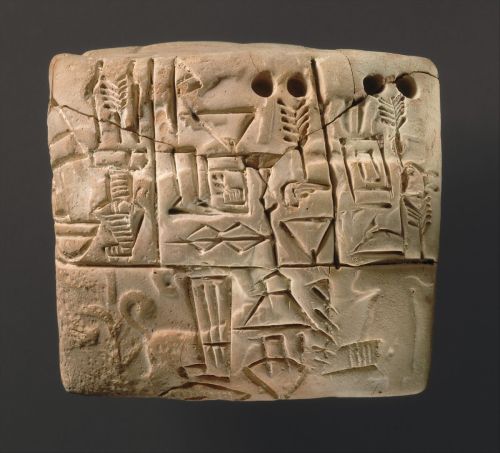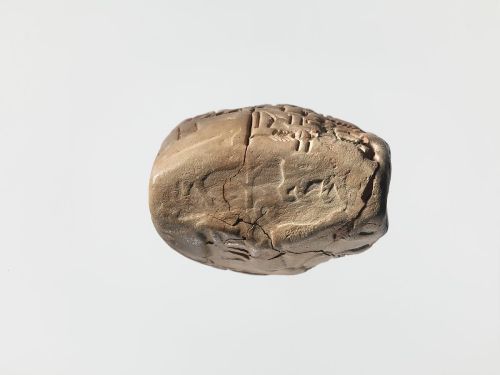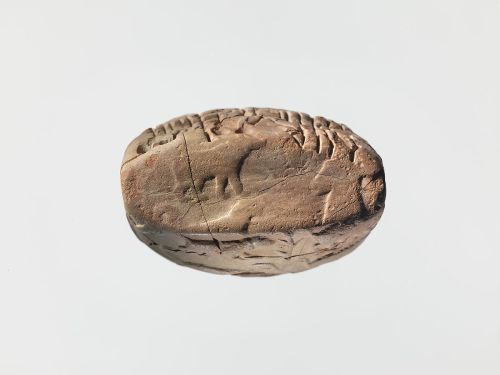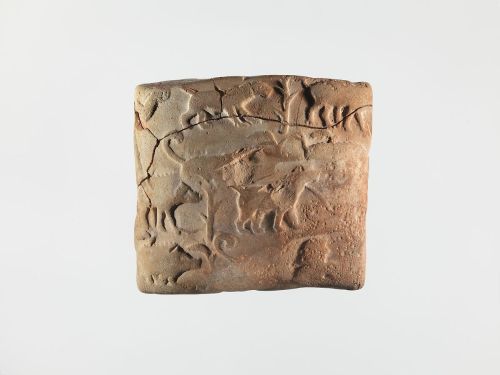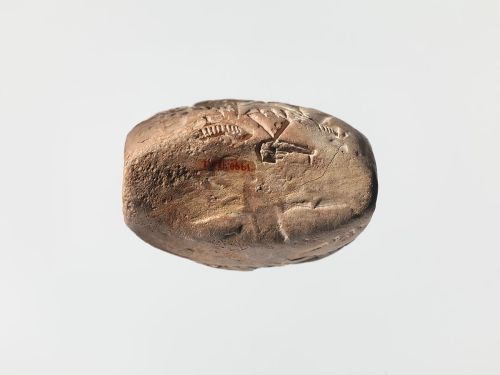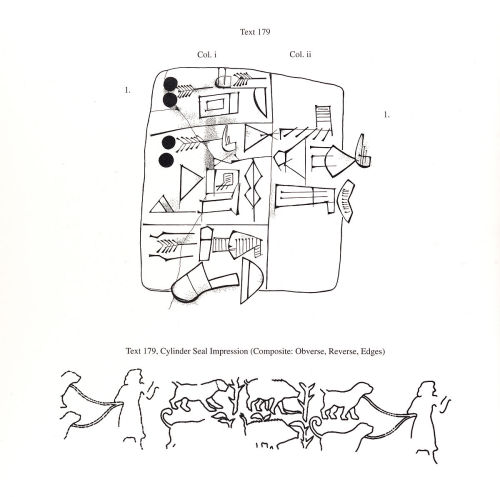Sumerian proto-cuneiform tablet (c. 3100 – 2900 BC). Administrative account of barley distribu
Sumerian proto-cuneiform tablet (c. 3100 – 2900 BC). Administrative account of barley distribution with cylinder sealimpression of a male figure, hunting dogs, and boars.At the end of the 4th millennium BC, written languagefirst developed in the region of Sumer. At first it was justpictographs drawn into clay, but it eventually developed into moreabstract forms called cuneiform.The pictographs (like those on this tablet) are calledproto-cuneiform, and a pointed implement was used to draw them in theclay. Circular impressions alongside the pictographs representednumerical symbols.“Cuneiform” means “wedge-shaped”, from Latin cuneusmeaning “wedge”. It was made by pressing a reed pen orstylus with a wedge-shaped tip into a clay tablet. When dried to asomewhat hardened state, clay makes a good surface for writing. Whenthe clay is fired, the records written on it become permanent.Early writing was mostly used to record and store economicinformation. This tablet probably documents grain distributed by alarge temple, but the lack of verbs in these early texts makes itdifficult to interpret them with certainty.The imagery of the cylinder seal also records information. The sealwas incompletely impressed on both faces of the tablet, and on itsedges (the seal itself has not survived). This impression shows amale figure guiding two dogs on a leash, and hunting (or herding)boars in a reed marsh. He is the priest-king, a male figure who canbe identified by his dress and pose. Here, he appears in his role asthe good shepherd who protects the flocks from wild predators. -- source link
#history#languages#writing#economics#politics#art#art history#uruk period#mesopotamia#sumer#sumerian language#latin#cuneiform#sumerian cuneiform#barley#cylinder seal
